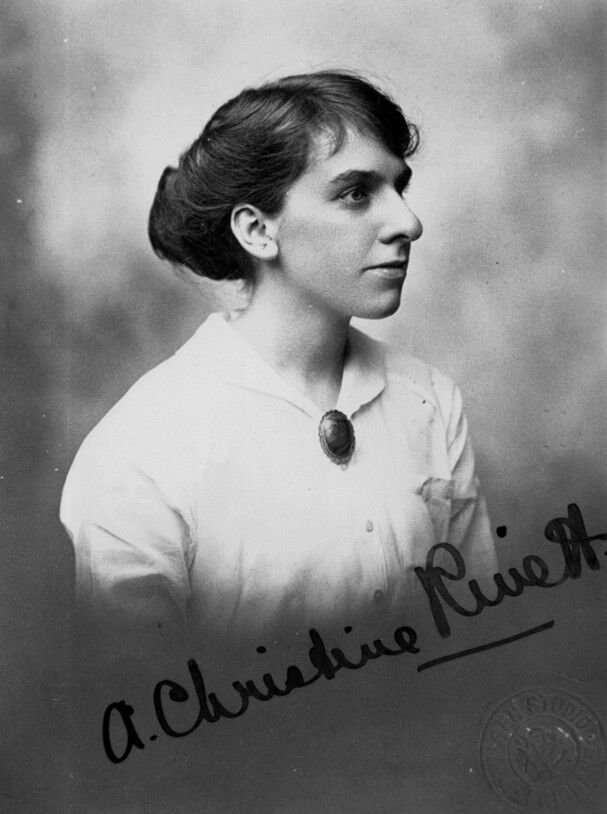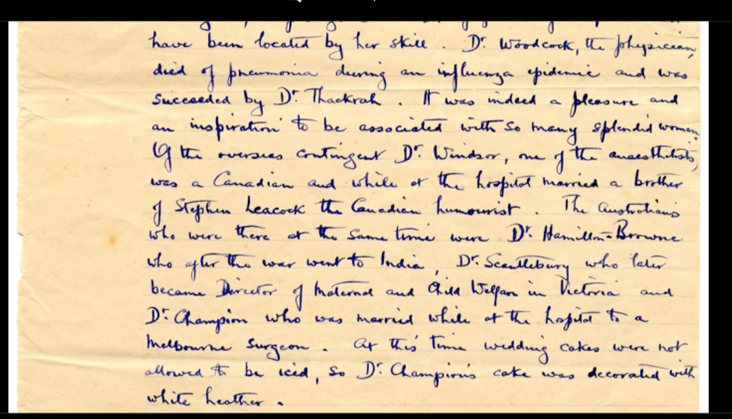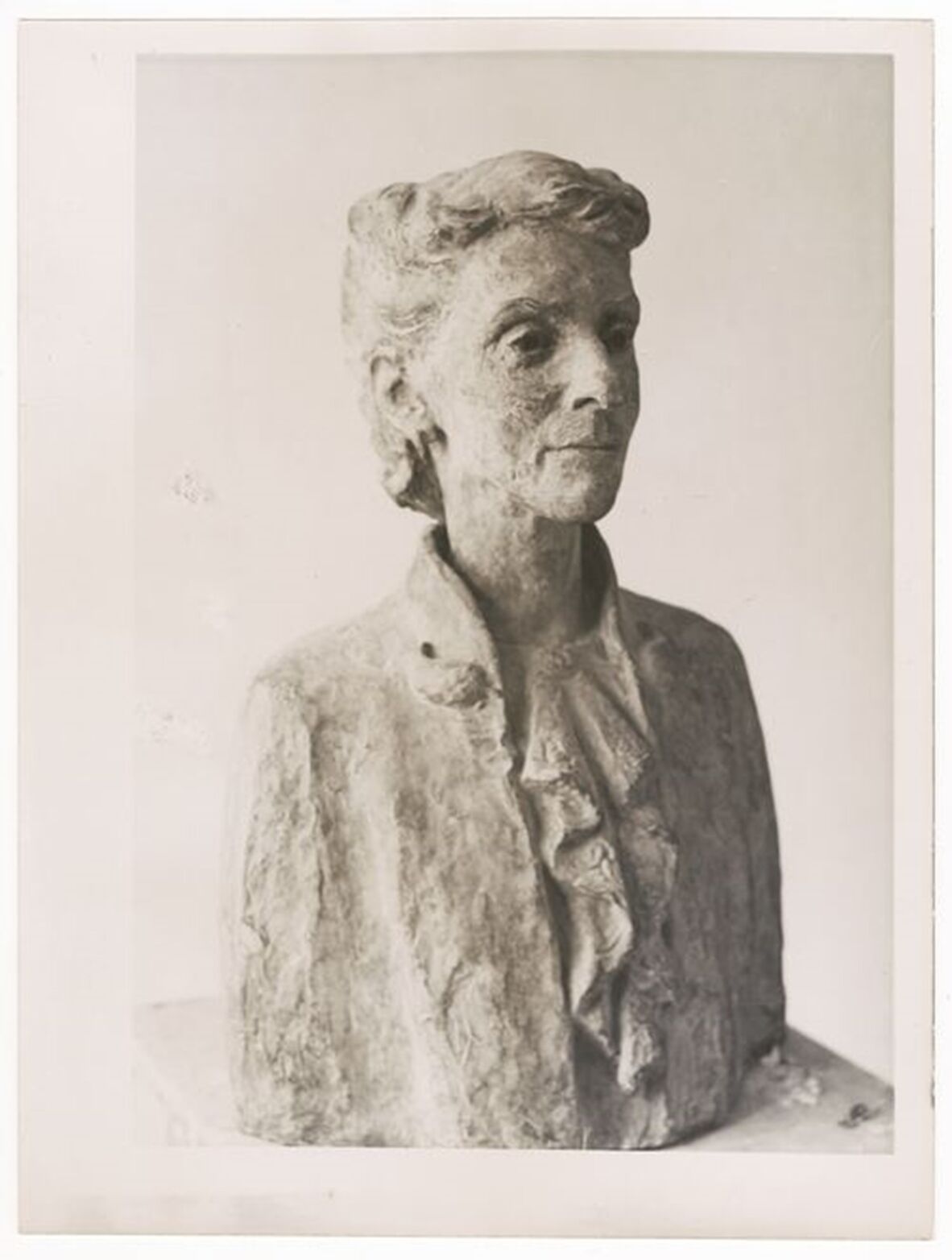Pioneers of Women’s Health in Queensland
By Christina Ealing-Godbold, Research Librarian, Library and Client Services | 4 April 2025
Queensland’s history is shaped by trailblazing women who defied expectations, broke barriers, and paved the way for future generations. This blog highlights four doctors who as pioneers left an indelible mark. Their stories deserve to be celebrated and remembered.
In the early twentieth century, female medical professionals in Queensland faced significant barriers and restrictions. Despite earning medical degrees, many struggled to secure positions, as male doctors were overwhelmingly preferred. Regardless of their qualifications and specialties, women were often limited to roles in children's and women's health. The President of the Medical Board, Dr John Thomson reported that wherever medical women were practicing in Queensland, they were doing so most capably and “giving utmost satisfaction”. (Williams, 1990, p. 154)
“Pioneer women in the health sciences in Queensland often had great difficulties to surmount and many battles to fight. At times, they felt very alone in their work and lacked support from their profession”
Notable doctors in early twentieth century Queensland included Dr. Lilian Violet Cooper, Dr Eleanor Bourne, Dr Eleanor Greenham, and Dr Christine Rivett. The lives of these women were punctuated with overseas study, war time nursing and overseas mission work.
Between 1906 and 1910, a number of interstate doctors came to Queensland to take up appointments throughout the state as they were denied positions within their own towns.
According to Lesley Williams in her work “Feminine Frontiers: Queensland’s Early Medical women”, there were 21 medical women practicing in Queensland by 1911, 9 in Brisbane and 12 in regional centres, including Boulia, Jundah, St. George, and Muttaburra. (p154).
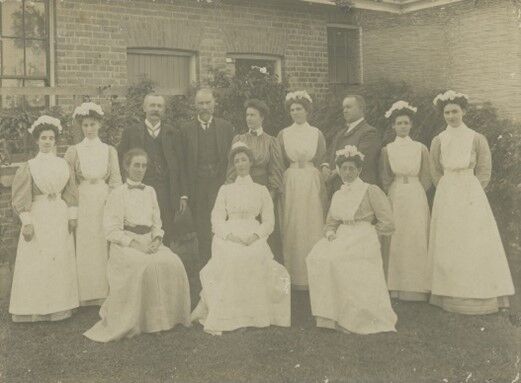
Photograph of Medical and Nursing staff of the Lady Lamington Hospital, Brisbane 1908 Doctors include Peter Bancroft, Sir David Hardie, Eleanor Bourne, Hilton Love and Lilian Cooper. Photographer: Ada Driver, John Oxley Library, State Library of Queensland, Digital copy available
Dr Lilian Cooper
Dr Lilian Cooper was educated in Scotland and at the London School of Medicine for Women. She became the first practising female doctor in 1891 at Cordelia Street, South Brisbane in partnership with Dr Booth. Reportedly, male patients did not want to be attended by her in her South Brisbane clinic and her partnership with Dr Booth did not go well. Therefore, in the Brisbane Courier on 24th December 1891, Dr Cooper notified that she “had commenced practice at 5 George Street Mansions in the city” and “made a special study of the Diseases of Women and Children”.
Dr Cooper was registered as Medical Practitioner number 489 in Queensland and had a long and successful career as a General Practitioner and as a Surgeon. Her mode of visiting patients in the 1890s was in a pony cart; however, she later became the first registered female motorist in Queensland. In the late 1920s, she became a Foundation Member of the Australasian College of Surgeons (1928) and a Foundation Member of the Queensland Medical Women’s Society (1929).
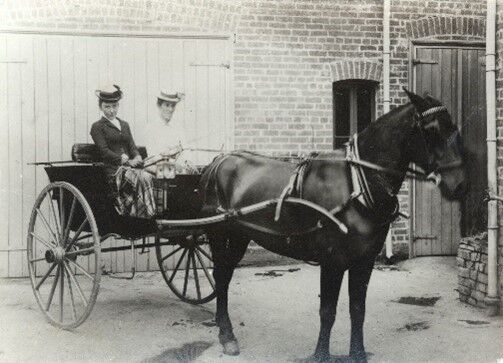
Josephine Bedford and Dr. Lilian Cooper seated in a horsedrawn buggy, Brisbane, John Oxley Library, State Library of Queensland, ca. 1900, Image number: 7593-0001
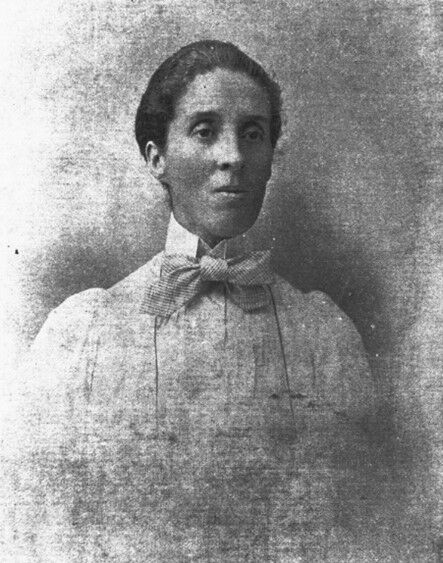
Queensland’s first practicing female doctor, Lilian Cooper. Portrait of Doctor Lilian Violet Cooper, John Oxley Library, State Library of Queensland, 2005
Dr Eleanor Constance Greenham and Dr Eleanor Elizabeth Bourne
Dr Eleanor Greenham and Dr Eleanor Bourne were the first Queensland born women to study medicine.
Dr Eleanor Greenham
Eleanor Greenham, born in 1872 in Limestone Street, Ipswich, studied at Ipswich Grammar School and enrolled in the Faculty of Arts at Sydney University in 1895, graduating Medicinae Baccalaureus, Baccalaureus Chirurgiae; - Bachelor of Medicine; Bachelor of Surgery (MB ChM) in 1901. Upon graduation, Dr Greenham was appointed resident medical officer at the Lady Bowen Hospital and continued in General Practice in Edward Street, Brisbane until her retirement. In 1903, she commenced visits to Ipswich every Friday, consulting at Limestone Street at the residence of Mr John Greenham. Like Dr Cooper, she was an early motorist, driving a Darracq and later a Hupmobile. Dr Greenham was so interested in motoring that she became a major shareholder in Evers Motors, the Hupmobile agents in Brisbane. She died at New Farm in 1957 after a career spanning 55 years.
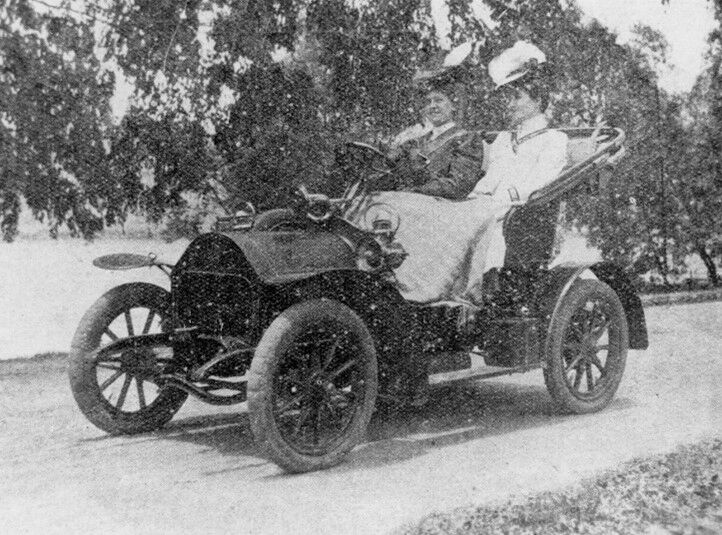
Dr Eleanor Constance Greenham in her first car, John Oxley Library, State Library of Queensland, 1907, Negative number: 2066
Dr Eleanor Bourne
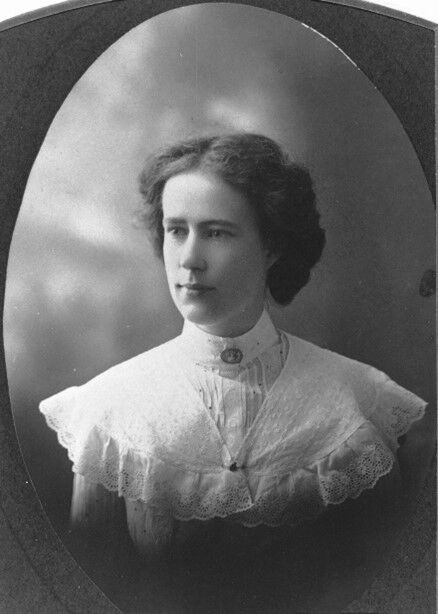
Portrait of Doctor Eleanor Elizabeth Bourne, 1878-1957, John Oxley Library, State Library of Queensland, Negative number: 168869
Born in South Brisbane in 1878, Eleanor Bourne was an outstanding student of the Brisbane Grammar School, winning medals for academic performance in 1896. The government exhibition awarded to her late that year by the University of Sydney was the first given to a woman – hitherto, exhibitions (or scholarships) for university had only been given to male students. Eleanor completed both a Bachelor of Medicine and Master of Surgery in 1903 at the University of Sydney and went into General Practice in 1907 in Brisbane.
Eleanor Bourne also served as a doctor for the Hospital for Sick Children and from 1911 became the Medical Officer for the Department of Public Instruction where her speciality was in child health. She had a long and successful career in which she was known for her knowledge of anaesthetics. In January 1916, Dr Bourne travelled to London where she served as a lieutenant of the Royal Army Medical Corps during the First World War in the Endell Street Military Hospital, staffed entirely by women. She was later promoted to Major in 1917, and became Medical Officer to Queen Mary's Army Auxiliary Corps.
In 1920, Dr Bourne was awarded a Diploma of Public Health by the Royal College of Physicians and of Surgeons, and appointed assistant medical officer to the city of Carlisle. Here she was responsible for organizing child welfare services and for the new maternity hospital and associated maternal welfare services. Ill health forced her to resign, and she retired to Manly, Queensland in 1937. In her retirement, Dr Bourne became the Honorary Medical Officer for the Creche and Kindergarten Association of Queensland. Dr Bourne’s papers are held by the John Oxley Library and include a variety of reminiscences from her time in Britain and in Australia. They are online and available to read through State Library’s OneSearch catalogue.
Dr Christine Rivett
Despite several women doctors working in Queensland by 1921, only one appears to have adopted a specialty of women’s health and gynaecology, more particularly in relation to birth control - Dr Christine Rivett. The focus for doctors in Queensland in those first few decades of the twentieth century had been more about the child and less about the mother. Dr Rivett’s work aimed to balance the medical care in favour of both the wellbeing of mother and child.
Amy Christine Rivett was born in Victoria in 1891 and educated in New South Wales, studying medicine at the University of Sydney graduating in 1915. With few opportunities open to her in Sydney, Dr Rivett came to Brisbane, initially filling the role of Superintendent of the Hospital for Sick Children in Brisbane and then resident medical officer at Brisbane General Hospital. This was followed by appointment to the position of medical officer at the Lady Bowen Hospital for Mothers and Babies in 1918. She then began her own practice on Wickham Terrace from 1919, specializing in gynaecology and women’s health. "In the 1920s, she was appointed as the Municipal Medical Officer in Brisbane. Taking on this role meant that she was in charge of licensed prostitutes and had to inspect Brisbane brothels." (Williams, 2006, p. 40)
In Brisbane, women experiencing problems conceiving or dealing with the many medical issues in women’s health were referred to her clinic, located at 149 Wickham Terrace, near to Upper Edward Street and on the opposite corner to the Baptist Tabernacle. She was known for holistic treatment and had an interest in complementary medicines and nutrition at a time when this was not a popular choice of treatment.
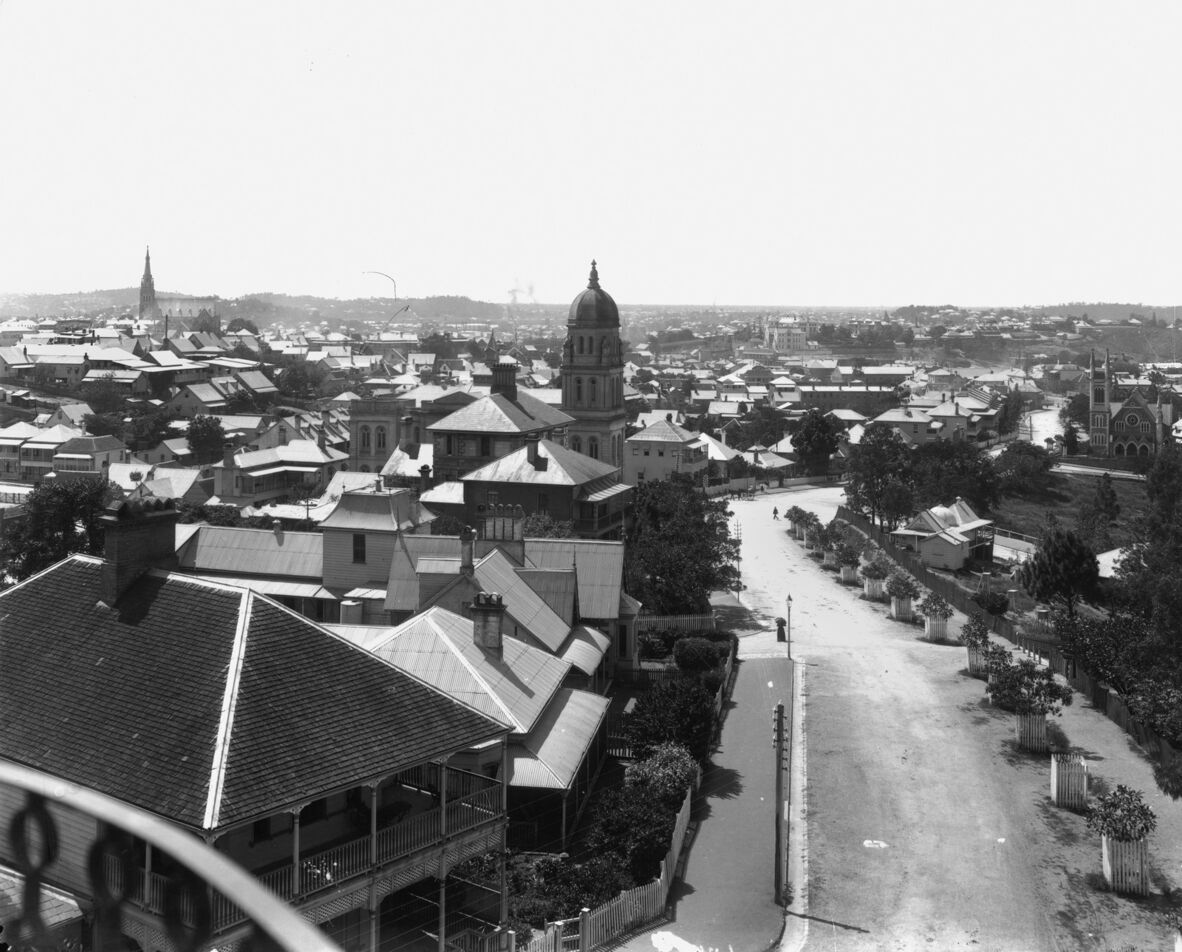
Wickham Terrace, Brisbane, 1900?, John Oxley Library, State Library of Queensland, Negative number: 123140
Dr Rivett was also a follower of Marie Stopes who opened the first birth control clinic in England in 1921. Throughout the 1930s, Dr Rivett gave numerous lectures to clubs and societies on the benefits of educating women about birth control and the need for a clinic that women could attend for advice. She was quoted in the newspapers as saying her aim was to educate women so well that there would never be “illegitimate children.” The lectures were not always received well in conservative Brisbane. It was noted that the women’s movement in various formations in Queensland including suffrage, unions and temperance organizations had not, up until the mid-1930s, taken on board the idea of a women’s birth control clinic. Much of the work of the wellbeing of mothers and babies were under the auspices of the Maternal and Child Welfare units (known as Baby Clinics since 1917).
Despite the concerned elements of Brisbane society, the idea of teaching birth control had many supporters, especially during the 1930s when families struggled to raise more children than they could afford. In articles in the newspapers of the day, women wrote asking for this essential element that would improve their lives – family planning. As one woman wrote, “if the law does not allow the establishment of them, alter the law to meet this crying need.” Correspondents in the newspapers also noted that the women’s organizations such as the National Council of Women and other groups had done nothing towards the establishment of a birth control clinic by 1935 and claimed that it was “time for women to demand official recognition of this problem.” It was not until 1939 that a committee was formed in Queensland to further the idea of a birth control clinic.
Admired and well liked in the Brisbane community, Dr Rivett took part in literary organizations, art exhibitions, women’s clubs and willingly lectured to those who were interested in the concept of birth control.
Brisbane’s Flying Doctor
In her free time, Dr Rivett also took flying lessons. She was the first Queensland woman to gain her A-Class pilots license in 1929, and in 1930, flying her Gypsy Moth aircraft, welcomed Amy Johnson to Brisbane, accompanying her from Toowoomba. Dr Rivett was considered the first flying doctor in Queensland, however unofficially. It was not until 1937 that a permanent position in the Royal Flying Doctor Service was offered to a woman from Melbourne, Dr Jean White.
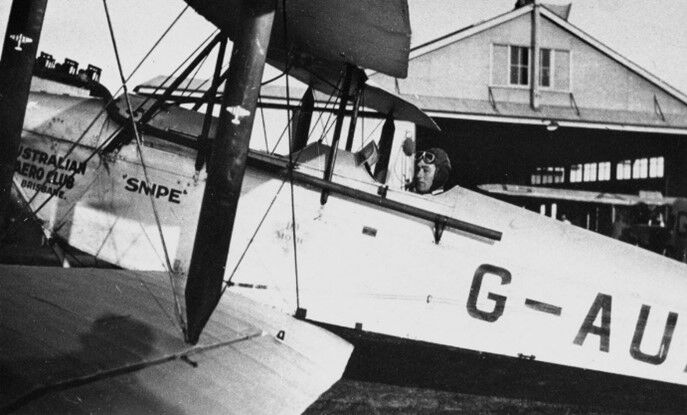
Snipe, a Gypsy Moth aeroplane, at Archerfield Aerodrome, John Oxley Library, State Library of Queensland, Negative number: 194245
The Queensland Sculptor and artist, Daphne Mayo, known for her public art including the tympanum of Brisbane City Hall and the Women's War Memorial in ANZAC Square created a bust of Dr Rivett in 1950. The sculpture is in the National Portrait Gallery of Australia in Canberra.
Dr Christine Rivett died in Sydney in 1963, having made a significant contribution to Queensland in many ways – as a doctor, an aviatrix and a supporter of the Birth Control movement. Dr Rivett was a foundation member of the Queensland Medical Women’s Association in 1929, and a generous donor to the Queensland Art Gallery Reference Library. A collection of her book plates is held by the State Library of Queensland.
A lasting contribution
From Queensland’s first practicing female doctor to the first Queensland-born woman to study medicine, and the leading practitioners of women's health and birth control, these four doctors made significant contributions to Queensland society. All faced substantial challenges on their journeys to becoming practicing professionals. They were pioneers in utilising modern transportation—cars and airplanes—to reach their patients as quickly as possible. Drs Cooper, Greenham, Bourne, and Rivett played pivotal roles in advancing the health of mothers and children in the early twentieth century..
State Library of Queensland houses a wealth of collections documenting the achievements of women who challenged boundaries and shattered glass ceilings in their professions. Within John Oxley Library a rich selection of papers and photographs of early female doctors and wartime nurses are held. In addition, the Library offers published books on the history of female doctors, medical journals available through the Library’s eResources, and a treasure trove of newspapers chronicling women’s activities across the state. These collections offer valuable insights into how pioneering women in medicine navigated and challenged gender inequalities at the turn of the 20th century.
Selected Further Reading
Books
The charge of the parasols: women's entry to the medical profession / Catriona Blake
To the ends of the earth: women's search for education in medicine / Thomas Neville Bonner
Women as healers: a history of women and medicine / Hilary Bourdillon
With courage and scalpel: the story of Lilian Cooper - Queensland's first female medical practitioner/ Cazalar, Lorraine, Queensland Women's Historical Association
Making women's medicine masculine: the rise of male authority in pre-modern gynecology / Monica H. Green
The Medical Board of Queensland: one hundred and forty years / Ross & Heather Patrick
"Feminine Frontiers” Queensland’s Early Medical Women. Lesley Williams in Fevers and frontiers/ John Pearn & Mervyn Cobcroft
Hygeia's daughters: pioneer women in the health sciences in Queensland / editor: Lesley Merle Williams
No better profession: medical women in Queensland, 1891-1999 / Lesley M. Williams
Audio
Lilian Cooper: Dangerous Women podcast series
Zwalf, Holly, 1981- interviewer.; Forde, Katy, interviewee.; Inkpin, Jo, interviewee.; Snaggletooth Productions, production company.; State Library of Queensland, commissioning body.; Queensland Library Foundation, sponsoring body.
Brisbane, Queensland: State Library of Queensland; 2020
Dangerous Women podcast series
Lilian Cooper: Dangerous Women podcast series. Available online
Manuscript
Bourne, Eleanor Elizabeth, 1878-1957
OM82-15, Eleanor Elizabeth Bourne papers, John Oxley Library, State Library of Queensland.
More information
Plan your visit – https://www.slq.qld.gov.au/visit
What’s on at State Library – https://www.slq.qld.gov.au/whats-on
Library membership – https://www.slq.qld.gov.au/services/membership
One Search catalogue – https://onesearch.slq.qld.gov.au
Ask a librarian - https://www.slq.qld.gov.au/services/ask-librarian
Comments
Your email address will not be published.
We welcome relevant, respectful comments.
